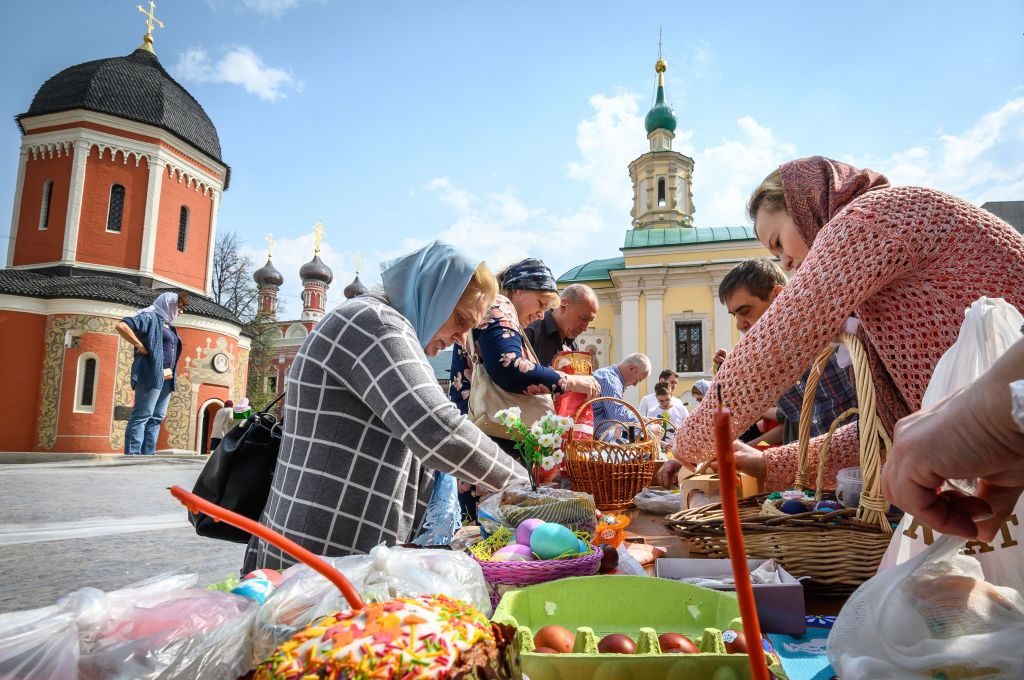The Russian Orthodox Church, which I converted to in 2018, has disgraced itself in the years since. Its Patriarch Kirill has oiled up to Vladimir Putin and his war effort on every possible occasion since Russia invaded Ukraine. My feelings about this strand of Christianity may be highly ambivalent now: what good is its staggering beauty if it fails to properly call out mass murder? How is Putin, as we’re constantly told, a “devout believer,” when it seems he’s simply ticking his way through outraging the Ten Commandments? But my fondness for some of its rituals, including Orthodox Lent, which starts this week, remains.
Lent was designed to be a time of prayer and reflection, of turning inwards and away from the flesh
Lent which, under Orthodox tradition means no eggs, meat or dairy (or even fish for designated periods), can be weirdly enjoyable, if only for the break in routine and the longings it unleashes. Besides, set it beside Ramadan, when during the hours of daylight even water can’t be drunk, and you realize things could be a whole lot worse.
“Post” (as Lent is translated) in Russia is taken seriously and is even quite big business. Numerous restaurants have special “Postnoi” menus, with things like borscht, eggless potato pancakes and different mushroomy concoctions in lieu of meat. There’s also walnut-stuffed eggplant and, in some places, disturbingly, “broccoli sushi.” But given most people won’t traipse out for this stuff, the key is to make edible Lent food at home. In those forty days in Russia five years ago, I lived on fried rice with peppers, bean and cabbage soups, bubble and squeak with apple sauce and, for breakfast, bananas, jam and prianiki, the delicious little gingerbread cakes sold in bags at markets.
Certainly this was a simplified Lent, a Lent “light” as it were. The online rules specifying something far more austere, with no oil except at weekends, a virtual impossibility for nearly every dish I could cook. Here I took heart from an Orthodox friend, so staunch that when I once said I didn’t think the wine and bread of the communion were Christ’s literal body and blood, we nearly fell out. “You idiot!” he spat at me, the only time I ever saw him annoyed. But in Lent he allowed himself and others more leeway, offering me chocolate two days before its ending. “Doesn’t it have milk in it?” I asked. He shrugged. “Let’s not overdo it,” he said — “it” being the abstinence rather than the chocolate.
Lent isn’t the only punishing Orthodox ritual in Russia early in the year. There is also January’s Epiphany when the hardcore immerse themselves in freezing cold water (Putin is regularly shown doing it), to emerge feeling that all their sins have been forgiven and they can start again.
There should, of course, be an element of self-mortification, but I have loved icy water since discovering Estonian saunas in the 1990s and had no aversion to it. On the appointed day, in the evening, we all drove out to an Orthodox church in the north of Rostov which had a special Epiphany pond beside it. With lines of others, stripping down to our underpants in the winter darkness, we waded through the freezing, waist-high waters. Any worries I had about hypothermia evaporated: the adrenaline of it all, and the mass of people waiting behind you, carried you effortlessly through. There was an instant camaraderie afterwards with others who emerged, dripping and shivering, to celebrate the real beginning of their year.
In Italy, where I’m living right now, plenty of people will be following Lent — though the rules for Catholics seem a lot less stringent and you don’t get the feeling the season’s so proudly on display or folded into the high street culture. Also, their time-frame is different. While the Orthodox period is set to start on March 18, Lent for other strands of Christianity kicked off in 2024 on February 14. Unlike the Italians, I ate my final meat-based meal last night in a local restaurant (“horse,” the waiter revealed depressingly afterwards) and had my last gelato al pistachio — if I stay the course — till early May.
It may be sheer masochism to do Orthodox Lent in this country, the birthplace of Parma ham, salami, Cassata and Gorgonzola cheese, but there are compensations. Pizza is ruled out, of course, though not focaccia barese, that delicious Puglian flat bread with cherry tomatoes and olives baked into its crispy base. There are jars of sundried tomatoes sold quite cheaply in the shops and plentiful olives — these of course can be bought from any supermarket, though I rarely do so. Cappuccino will be swapped for espresso, there are borlotti and fava beans for making stews, and great handfuls of rocket and herbs in any supermarket. I shall be eating lots of pasta and for once, without cheese, shall be able to taste the pasta sauces — normally those I cook end up simply “variations on parmesan” with different base-notes peeping through.
Lent, of course, was designed to be a time of prayer and reflection, of turning inwards and away from the flesh. Yet you can’t help but notice, agnostic or believer, how much your diet improves. Without meat, eggs and cheese you’re thrown back on copious vegetables, which come into their own at this time of year. Peppers and aubergines gain a luster and for once there’s undeniably, as Withnail and I’s Uncle Monty says, “a certain je ne sais quoi oh so very special about a firm, young carrot.”
Vegans of course do this all year round and you don’t know whether to admire them or send condolences. But the annual chance to declare temporary truce with your body, stop assaulting it with animal fats and earn some spiritual brownie points into the bargain? Shto tut mozhet ne ponravitsia? as they in Russian. What’s not to like?
This article was originally published on The Spectator’s UK website.


























Leave a Reply